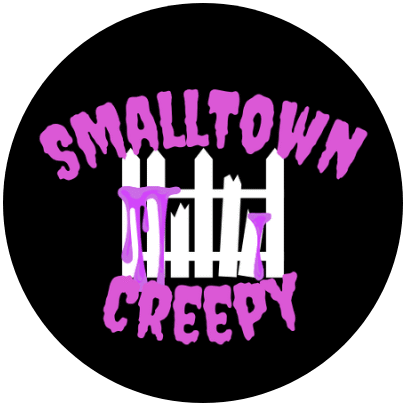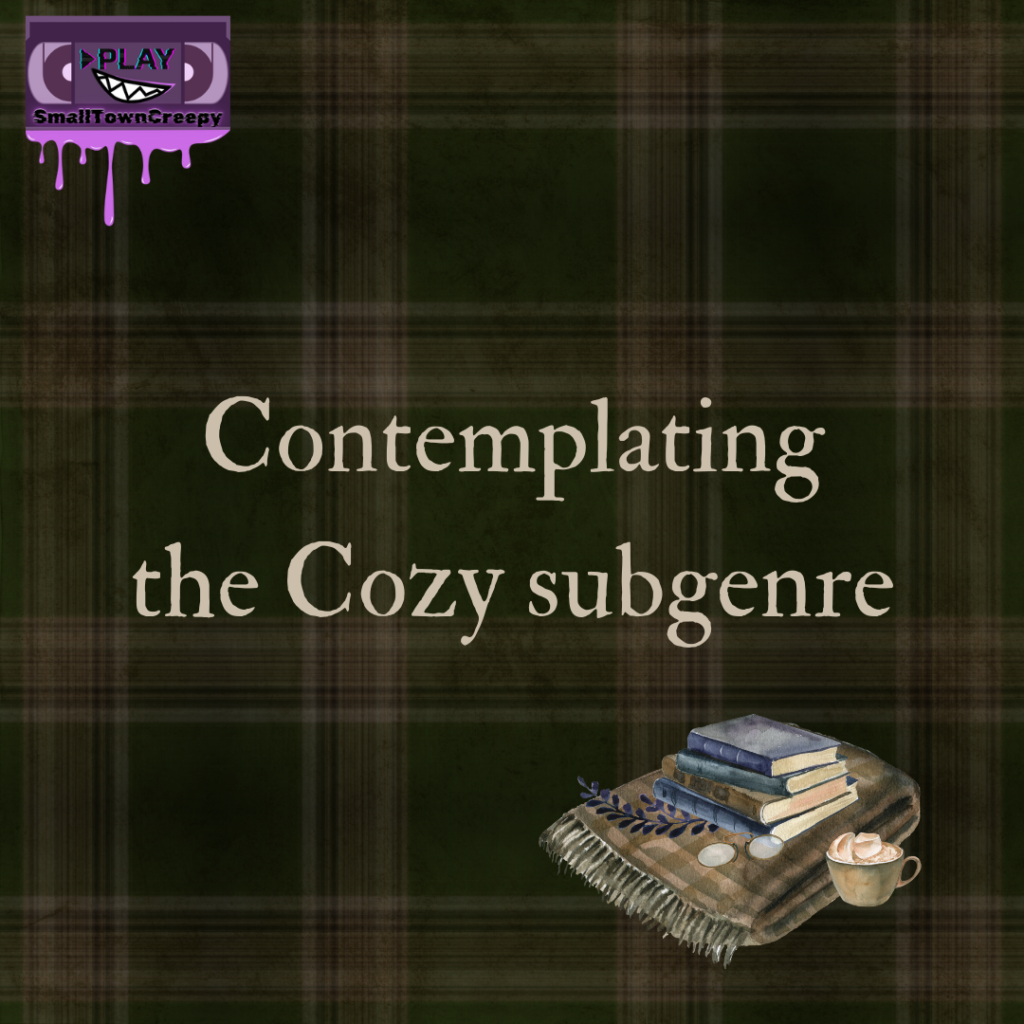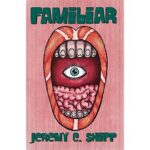Recently, Rev Casey wrote a particularly thought provoking blog post about how TTRPGs that want to emulate Studio Ghibli need to remember that said studio creates more than cozy imagery and music, it also creates stories about exploitation, oppression, ecological disaster, exclusion, and much more. This brought me back to a discussion that I and many folks in the book and game community keep having about the concept of Cozy. Cozy fantasy, cozy gaming, and, yes, even cozy horror.
Cozy Horror is a dirty word for a lot of folks. I’ve seen authors rant and rave over their books being called cozy, readers pissed over cozy horror lists, and articles damning the concept as being misogynist and more. I have no interest in fighting about this and I’m sure everyone has good points here but I think a large chunk of the issue is the fact that cozy is very misunderstood as a concept and subgenre.
Cozy has been Around for a Long Time
Whether it’s the story of Bilbo Baggins preferring to sit at home rather than be dragged into an adventure or children’s book illustrations depicting cute animals in cottages, the cozy vibe has been around since people got, well, uncozy. The concept of coziness — that is comfortable and content — seems to rise up in one way or another during darker periods of history. J.R.R. Tolkein wrote The Hobbit after World War 1 and the horrors he experienced during that time. He wrote the story of Bilbo as a direct correlation of English comforts and the boys and men he saw leave those comforts to fight in a world often much bigger and darker than they could have imagined.
Often the aesthetic, lifestyle, and themes of coziness are all about times and feelings before or beyond our current stress. Cozy is a call back to not only times in our lives when we were comforted (perhaps by a grandmother-type, quilts, hot coco, and so on) but also to a pre-industrial time period when we were living in villages, crafting or gardening for our daily needs, and didn’t have many of our modern stressors BUT, notably, without the discomforts of disease, social ills, and similar. In this way, cozy is hand in hand with other nostalgic aesthetics like cottagecore and Renaissance fairs and Medieval Times which is probably why it goes well with fantasy literary genres.
There is currently a rise in cozy fantasy in particular with books like Legends & Lattes by Travis Baldree and manga like Otherworldly Izakaya Nobu by Natsuya Semikawa and Virginia Nitouhei.
Some may claim that cozy subgenres require low conflict or a focus on slice of life but not only do we see that isn’t the case in mystery we can also find proof that books can be cozy and high drama when we look at the most famous cozy fantasies — Tolkein’s The Hobbit and Howl’s Moving Castle by Diana Wynn Jones. Both of these stories contain not only war but personal difficulties and conflict and yet are still the first stories people tend to think of when considering cozy fantasy.
Cozy is for More than Fantasy
Cozy was likely first attributed in literature to the mystery genre. Cozy mysteries are books where mysteries (usually murders but sometimes theft and other crimes) are solved by main characters that are not in the police field.
Agatha Christie is usually credited with being the (unintentional) mother of the cozy mystery genre with her Hercule Poirot and Miss Marple series. The term “cozy” was first coined in the late 20th century when various writers produced work in an attempt to re-create the Golden Age of Detective Fiction. Cozies as we know them today “frequently hang on a hobby or activity “hook” such as knitting, scrapbooking, cooking, etc. It’s a marketing ploy that enables publishers to refer to “the Mall Cop mysteries” or “the Dead-End Job series.” This style became popular in the 1980’s and continues today.
~ Mansfield Richland County Public Library
Despite the fact most cozy mysteries deal with someone being murdered, the coziness is still there. Its in the cute jobs and hobbies the main character participates in (baker, quilter, knitter, garage sale diva, etc). The close knit communities and small towns the main character lives in. The humor and characters with the exception of the villain who tends to be an unlikable person.
Cozy mystery is great example of how the term doesn’t mean lack of conflict or death.
Cozy Horror
Yes, I am preparing myself for pitchforks and angy villagers with this one. Cozy horror for so many seems to be a deragotory term either for the books/authors or their readers. Many claim the term is misogynistic and only used on women in the genre. Others, like me, feel its is a very apt term for books that lean into many of the vibes we see in Cozy Mystery. Horrors that take place in a close knit community with scenes involving quaint hobbies or jobs,
An excellent example of Cozy Horror is The Hollow Places by T. Kingfisher. In this novel we have a woman taking over an antiques shop (complete with taxidermy) from her uncle. There are scenes in a neighboring cafe as she befriends the barista in between reading fan fiction to relax. How cozy! Then there are scenes of liminal spaces, eldritch horrors, and body horror.
My point is, you can have both and its not a bad thing. Cozy doesn’t necessarily mean not scary. It doesn’t mean it doesn’t involve conflict. It means there are other themes and moments in the book that give an ambience. It means the main character isn’t a hard boiled detective, ER doctor, or someone else with a high stress lifestyle. Its someone like us cozy enjoyers, who we can see in a warm sweater while drinking a cup of tea…before facing off unimaginable terrors in the dark places of the world.
I for one want more of that.
Cozy is a Light in Dark Times
“when you felt cared-for and loved and didn’t have to worry about the outside world”
~Lisa White, WGSN’s director of lifestyle and interiors
As mentioned, cozy seems to rise in popularity during times of crisis and social difficulty. We saw this with Tolkein’s work where he wisely told use through the words of Frodo and Gandalf:
“I wish it need not have happened in my time,” said Frodo.
“So do I,” said Gandalf, “and so do all who live to see such times. But that is not for them to decide. All we have to decide is what to do with the time that is given us.”
It seems, what we’ve decided to do with the time that is given us is to get cozy.
The recent popularity with cozy likely rose from 2020’s quarantine. People were stuck at home with illness, stress, and world issues on their minds. Turning towards not only the romanticization of the home but towards things that provide comfort in difficult times is not a surprising outcome of that situation.
“Across interiors products, keywords related to cosy living jumped 46% in the UK and 11% in the US between November 2019 and November 2020, according to the trend forecasting agency WGSN. Pinterest declared “cocooning” one of its top trends for 2021, with searches for “cosy aesthetic outfits” up 100%.” ~ Hilary George-Parkin for BBC.com
People wanted comfort. They still want comfort as the world burns around us. This is not something to be ashamed of no matter what the Western Protestant ideals of boot straps might claim.
Is Cozy Going Anywhere?
Will cozy have an end? Is it winding down? Will it soon be replaced by grimdark vibes? Probably not. As I’ve shown, cozy has been around a while and so long as people enjoy being comfortable, it is likely here to stay. While it might not always make headlines or always be called cozy, it will likely have a permanent place as a subgenre or category of media and as a lifestyle aesthetic.
If you enjoyed this article or others on my blog, please consider supporting me on Ko-Fi. If you can’t tip, please share the article link on socials. Every share and dollar helps. Thanks.



